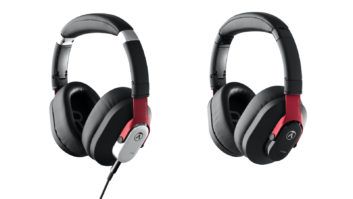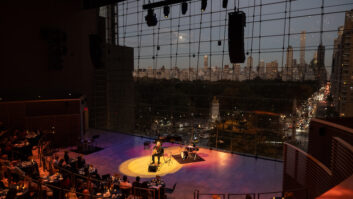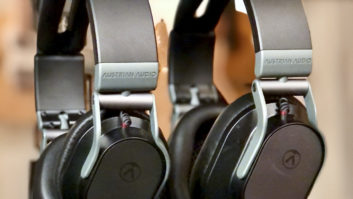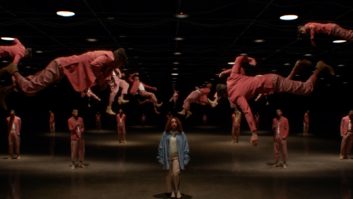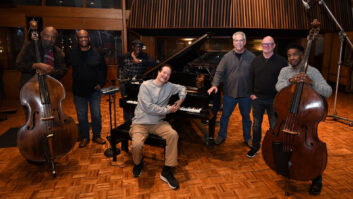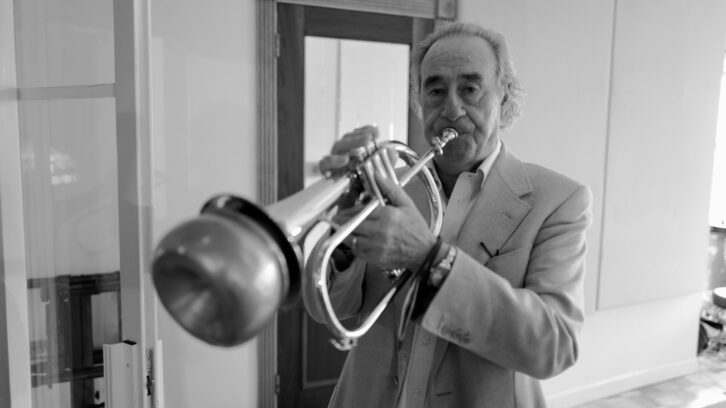
For six decades, Swiss jazz icon Franco Ambrosetti has been a revered trumpeter and flugelhornist in the European scene, playing with the likes of Dexter Gordon, Woody Shaw, Louis Hayes and Donald Byrd, and recording 26 albums as a band leader with such esteemed players as Kenny Barron, Tommy Flanagan and Phil Woods.
At 80, Ambrosetti, long known as a fluid improviser with blistering chops, is trading some of that ferocity for a more restrained approach. “When you’re in your 20s, you want to play as fast as you can and as high as you can, like Clifford [Brown],” he says in his new album’s liner notes. “But somewhere after turning 50, you concentrate on more important things, and you try to say something with just a few notes, but the right ones, like Miles Davis did.”
Ambrosetti’s latest release, Nora, serves that muse in a grand, orchestral statement; a crowning accomplishment of a long legacy. The sweeping collection of ballads spans the decades, from Ambrosetti’s own “Nora’s Theme,” written for a 1997 theater production of Ibsen’s A Doll’s House, to interpretations of classics including “Autumn Leaves,” John Coltrane’s “After the Rain” and Miles Davis’ “All Blues.”
“He wanted to summarize his life musically,” says producer Jeff Levenson, “and I don’t want to sound like a Hallmark greeting card, but there’s a lot of love in this project.” Levenson, a Grammy-winning producer whose collaborators have included Branford Marsalis, McCoy Tyner, Arturo Sandoval and the Bill Evans Trio, brought a dream lineup together for Nora: Ambrosetti leads an all-star ensemble featuring pianist Uri Caine, bassist Scott Colley, guitarist John Scofield and drummer Peter Erskine, along with a 22-piece string orchestra conducted by Grammy-winning pianist/arranger Alan Broadbent. The SACD album was mixed in stereo and 5.1 by immersive audio veterans Jim Anderson and Ulrike Schwarz and mastered in stereo by Greg Calbi and in surround by Bob Ludwig.
Grammy Engineering and Production Nominations Announced
For Levenson, it was important that the musicians brought a sense of camaraderie, of family and community, to the collaboration. “Everyone who has come together on this project—John Scofield, Peter Erskine, Scott Colley, Uri Caine—there’s a very strong sense of ‘let’s come together and enable Franco’s dream,” he says. “I think there’s a profound emotional investment to provide for Franco and to discover, collectively, ‘What are we trying to achieve?’”
A quintessential New York jazz project, Nora was recorded at Manhattan’s legendary Sear Sound, which imbued the sessions with a distinctive sense of place. “Sear Sound was a place that fostered or nurtured comfort,” says Levenson. “I think there’s no way to fully quantify or delineate its importance or value, but it was important and it had value. The room feels worn. It feels used. It feels kind of rich with history. Also, this was a room that accommodated 22 strings.”
The idea to record a surround album came from Jim Anderson, a 10-time Grammy winner who has recorded five Ambrosetti records, dating back to 1992’s Live at the Blue Note. “The deal was, we would mix stereo here, and while we were in the middle of the sessions, I said, ‘Guys, we’re going to miss an opportunity here because there’s so little in the surround and immersive world being done in this kind of music with this kind of quality and with these kinds of players,’” he explains. “I said, ‘We really have to take advantage of this.’”
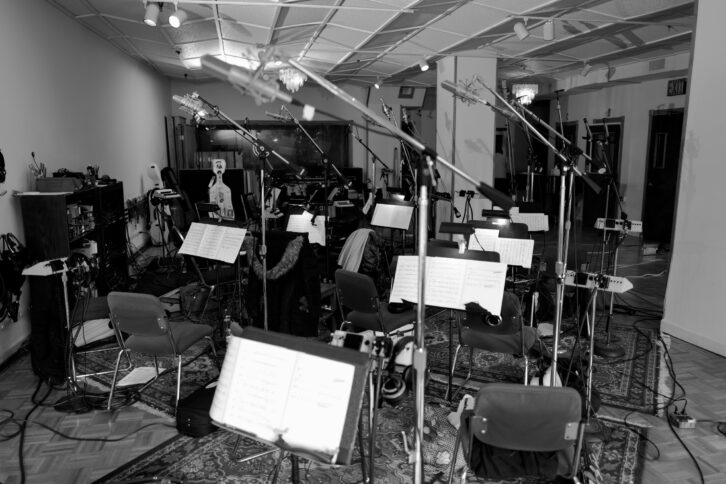
PLANNED SPONTANEITY
It was a whirlwind week of sessions: Ambrosetti, Erskine, Colley, Caine and Scofield were recorded on a Monday and Tuesday; strings arrived that Wednesday, which meant Anderson had to turn around edited references in just a few hours.
“I had said to Jeff, ‘Hey, man, any chance we could have them come in on Thursday?’ ‘Nope. They’re booked.’” he explains. “Anything that had to be done to the session had to be finished so the string players could just play right through. The assistant and I just went through and made sure that we had everything edited properly and that all the sessions were preloaded and ready to go for 22 strings.”
Because the strings and the combo were recorded on different days, musicians played to a click track, a somewhat unusual approach for a jazz recording. To try preserving a live, spontaneous feel, arranger Broadbent says, “My method is to have the orchestra involved in what I call a subsong, where the ensemble is playing its own melody, lifting and expressing things in quiet counterpoint with the lead song.”
Meanwhile, Anderson used the scores to build tempo maps for each session. “Some songs have an introduction and then there’s a little ritard, and then we go on; with all those things, there’s nothing left to chance,” he explains. “The rhythm section’s live, so if there’s any kind of interchange, it’s not like we’re building up from drums and then bass and piano. The strings never have anything that they have to respond to that’s not written out.”
On the final day, Ambrosetti could then respond to everything that had been captured. “What I’m trying to do is make sure I have the flexibility so that I’m not going to get locked into anything I record on Monday or Tuesday, with Franco not being able to, say, duck in and replace,” says Anderson. “That’s the real trick. I wanted spontaneous, but also I wanted it to be flexible at the same time.”
When it comes to miking, Anderson approaches every project with immersive mixing in mind. “Since 2006, I’ve just been adding the little extra pieces so if we ever got into a surround system of some sort, we’d have some flexibility and we’re not just taking mono bits,” he says. “I’ve actually got multiple stereo images of instruments that can make for a fairly convincing soundscape…I did this with the bass, for example. I had a couple of PZMs on the floor so I can actually have a little bit of natural room sound on the bass. Same for the guitar and piano: I have two or three stereo pairs building out the sound. I’ve left myself a lot of options, which will work fine in stereo, and then I also have options that I can use in surround.”
MIKING THE ENSEMBLE
Anderson captured strings using a Decca Tree with an A/B pair behind that, “so I could open things up for surround,” he explains. Mics included Brauner VM-1 in left/center/right and Sennheiser MKH 8020 left and right, with Sanken CU-41 dual-capsule cardioid condensers, Sennheiser MKH 70s and DPA 4007s on sections.
On Ambrosetti, Anderson used an RCA DX-77 and Sennheiser MKH 8020. “Franco is always, and rightfully so, concerned about the sound of his horn,” he says. “He’s the leader, and he wants it to be as lush and full as it possibly can be, so I had a combination of ribbons and condensers to fill him out a bit.”
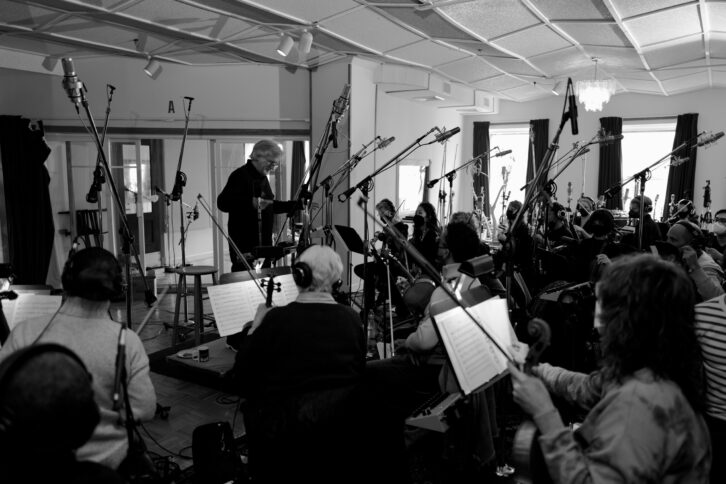
Guitar and piano were each captured with Sanken CU-41s; a Shure SM57, Neumann USM69 stereo condenser and an AMB tube-buffered DI were used on bass.
For Scofield’s guitar, Anderson says, “John came in with his amp, and he plugged it in and it just had this just nasty little hum, something I knew really wouldn’t be nice in either stereo or in surround. We had all these ESP music cord cables. I had one left over, and I said, ‘Let me just try this.’ I went in, plugged in my $800 AC cord, and the noise went away. On top of that, John’s sound became really tight and focused. In fact, on the first playback, John said, ‘What have you done to me?’ I said, ‘I replaced your AC cord.’
“[Then] John said, ‘There’s a little distortion. I’m doing that on purpose. Don’t take it away.’ There are a couple of notes on ‘After Green’ where he’s got just a bit of a bite on it, a little edge.”
On drums, Anderson used Sanken CU-31s and DPA 4007s, with Sanken CMS-2 M/S stereo mics and CU-41s on overheads. “In stereo, you’re trying to make everything pop out of two speakers,” he explains, “so if I can take the M/S over the drum kit and the A/B that I have over the drum kit, and I can put them front and back, I can create this. I like to call it almost like a cap or a lid on top of the mix; it feels like there are upper mics, but there aren’t. We actually are achieving that through a pair of stereo pairs.”
Recording chains were straightforward: Mics went through Anderson’s John Hardy and Millennia mic preamps, into Sear’s 60-input, custom-built Avalon console, captured in Pro Tools at 32-bit/192 kHz.
SURROUND MIXING
Mixing the Ambrosetti album was handled by the husband-and-wife team of Jim Anderson and Ulrike Schwarz, who have produced hundreds of critically acclaimed recordings and earned dozens of Grammy Award nominations and wins between them. They completed the stereo mix at Anderson Audio, their Brooklyn studio, and did the surround mix at Skywalker Sound. “We did stereo first because we wanted to get that approved, with the intention that those mixes would be the basis of the surround mix,” Anderson explains.
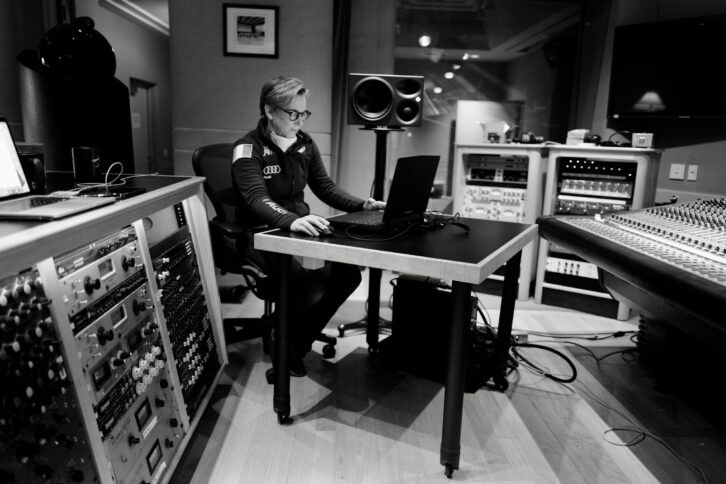
“We’re working in Pyramix here, so we had to have sessions that could be imported or exported from Pro Tools and imported into Pyramix,” he adds, “and, we think it just sounds better at the same time. We’ve done all those moves in stereo, so they’re all written into Pyramix. When we go out to Skywalker, all that work is done so we can just work on the enhancement of the surround.” They took a judicious approach with effects, focusing on lush reverb, including Universal Audio’s Capitol Chambers plug-in; for the surround mixes, the duo employed their “Skywalker trick” in the facility’s live chamber: “We set up a cube of four microphones on the first plane, and then about 15 feet above that is another cube of four microphones,” Anderson explains. “We have a pair of large Meyer monitors that blast and hit the diffusers and excite the room, and that’s our live chamber. That’s how we get our quad reverb; we actually have natural reverb with height.”
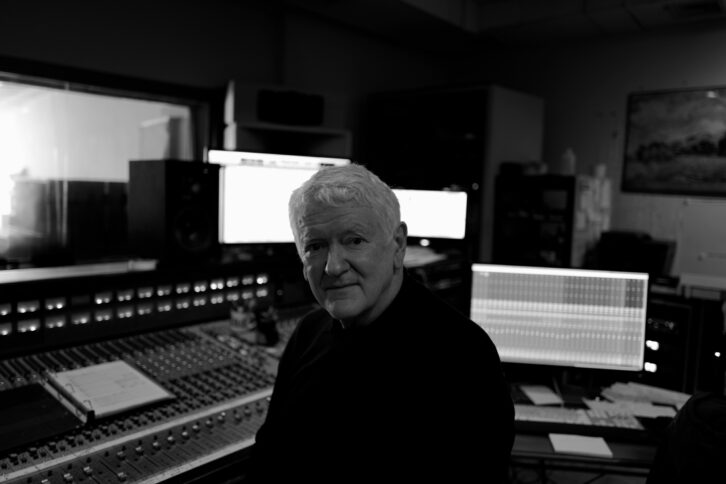
Anderson originally approached the Ambrosetti project with the idea of creating an Atmos mix, but Sear Sound’s low ceilings proved to be a challenge for height capture, and during mixing, the team decided to move to 5.1. “That felt right,” he says. “We could really wrap the orchestra and then present Franco in front of you, and the rhythm section, too.
“There’s always a new audience, especially when you get into surround,” says Anderson. “It’s nice that Franco thinks about a project once a year or maybe once every two years, and I’m so happy that we can introduce him to a brand-new audience that’s maybe never heard him.”



